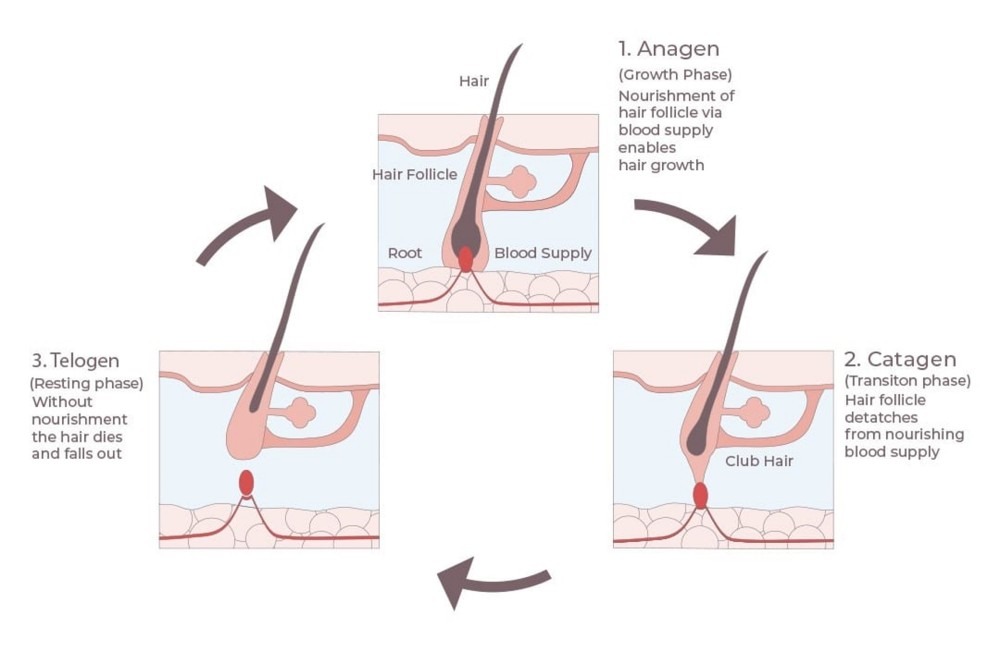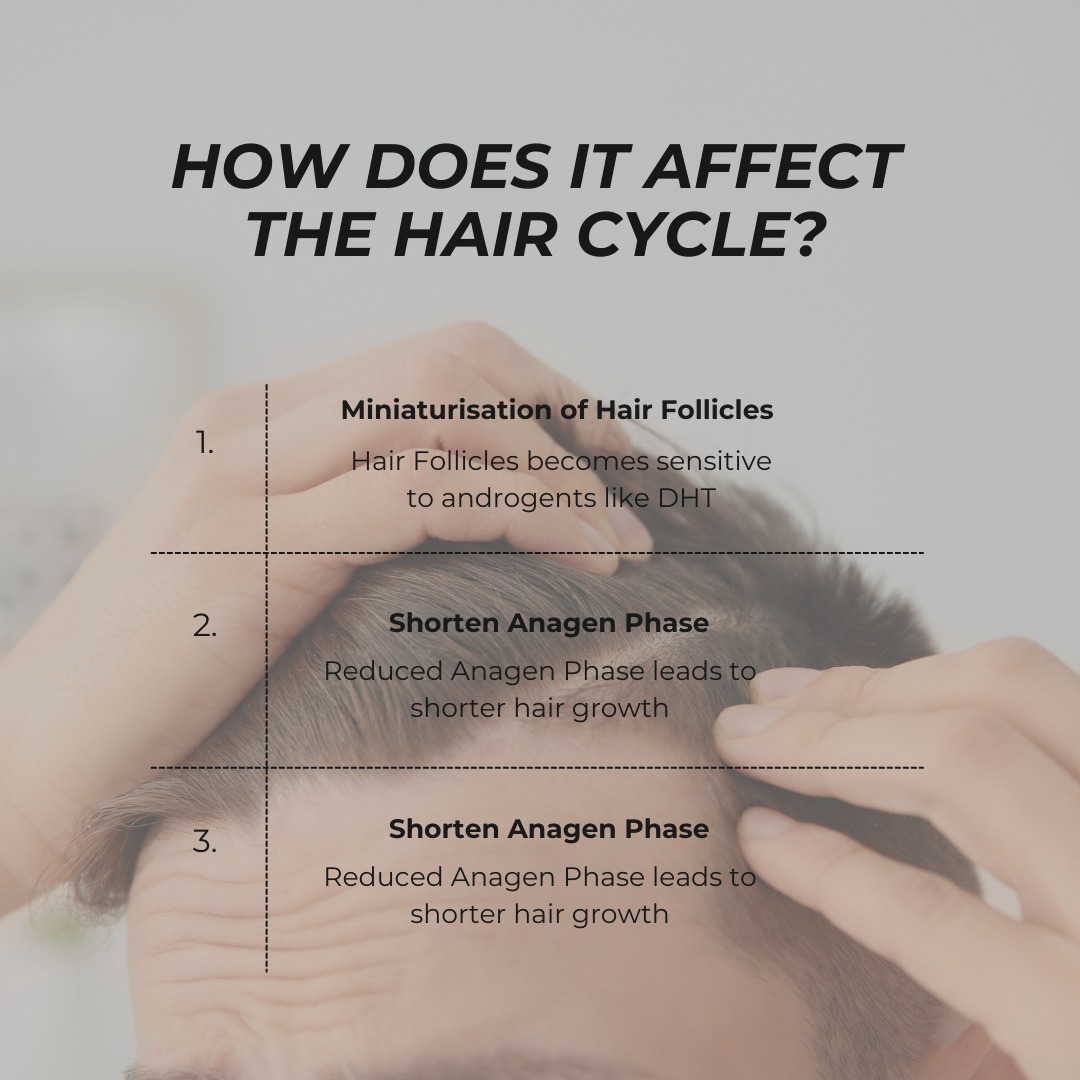Male Pattern Baldness
Male pattern baldness is a prevalent issue in Asia, affecting a significant number of men across the continent.
Understanding
Male Pattern Baldness
Understanding Male Pattern Baldness is essential for men facing hair loss concerns. This condition affects a large percentage of men as they age, resulting in gradual hair thinning and balding.
It typically begins with a receding hairline and thinning at the crown, creating an “M” or “U” shape pattern. The main cause is a combination of genetic factors and male hormones like dihydrotestosterone (DHT), leading to shrinking hair follicles and shorter growth cycles. While generally harmless, it can have emotional impacts on those affected. Treatments include medications, surgery, and laser therapy.
Let’s explore the key aspects of Male Pattern Baldness and how it impacts men’s hair.
What Causes Male Pattern Baldness?
Male Pattern Baldness is primarily influenced by genetic and hormonal factors:
Genetics: Family history plays a significant role in Male Pattern Baldness. Specific genes inherited from both parents can make men more susceptible to hair loss. If there’s a history of baldness on the maternal or paternal side of the family, the likelihood of experiencing Male Pattern Baldness increases.
Hormones and Androgens: Hormones, particularly androgens like dihydrotestosterone (DHT), play a crucial role in regulating hair growth. In men predisposed to Male Pattern Baldness, hair follicles become sensitive to DHT, leading to hair miniaturization and thinning.
Age and Hormonal Changes: Male Pattern Baldness can become more evident with age as hormonal levels fluctuate. As men age, the concentration of DHT in the scalp may increase, further impacting hair follicles’ sensitivity and contributing to hair loss.


The Hair Growth Cycle:
The hair growth cycle consists of three main phases:
1.Anagen Phase (Growth Phase): This is the active growth phase when hair follicles produce new hair cells rapidly, leading to visible hair growth. The duration of the anagen phase varies from person to person, influencing hair length and thickness.
2.Catagen Phase (Transition Phase): In this transitional phase, hair growth slows down, and hair follicles shrink. The hair detaches from the blood supply, preparing to enter the next phase.
3.Telogen Phase (Resting Phase): The telogen phase is a resting period for the hair follicle. The hair is fully formed but not actively growing. After a few weeks, the hair sheds naturally, and the hair follicle re-enters the anagen phase to start a new hair growth cycle.
How Male Pattern Baldness Affects the Hair Cycle?
Male Pattern Baldness disrupts the hair growth cycle in the following ways:
1.Miniaturization of Hair Follicles: Under the influence of genetic and hormonal factors, hair follicles become more sensitive to DHT. This leads to the gradual miniaturization of hair follicles, resulting in thinner and weaker hairs with each hair growth cycle.
2.Shortened Anagen Phase: With each hair cycle, the anagen phase becomes shorter in affected hair follicles. This leads to progressively shorter and thinner hair growth, making them less visible on the scalp.
3.Reduced Hair Density: As hair follicles produce thinner hairs, the overall hair density on the scalp decreases. This results in areas of visible scalp and overall hair thinning.


Taking Control of Male Pattern Baldness:
While Male Pattern Baldness is influenced by genetics, early intervention and personalized treatments can help manage the condition effectively. At DRx Trichology Centre, our experienced trichology specialists offer customized solutions to address hair loss concerns in men. Take the first step towards healthier, fuller hair by scheduling a free consultation today. Let’s begin your hair revitalization journey together!


